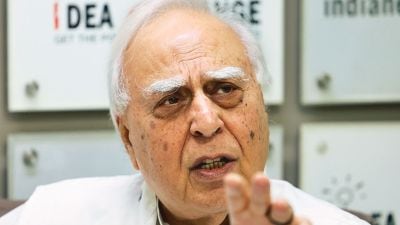Uneven monsoon and stubbornly high food inflation have taken a bite off rural demand but the situation has now started to show signs of improvement as reflected in the recent two-wheeler sales, decline in MNREGA job demand among other things, Confederation of Indian Industry (CII) President R Dinesh said.
In an interview with Aanchal Magazine, Dinesh, who is also the Executive Chairman of TVS Supply Chain Solutions, said there are early signs of crowding in of private investment. Edited excerpts:

Q: Demand, both domestic and external, has been affected. This has been visible in exports numbers and private final consumption expenditure in GDP. Are there concerns that the tempering of demand will affect production also going ahead? Rural demand has been flagged as a concern by some FMCG companies. Are there other sectors where you see an impact of the weakening demand?
A: CII expects the overall economic growth to come at a high of 6.8 per cent in the current fiscal year, which marks an upgrade from the previous print of 6.5 per cent. That said, there have been pockets of weak demand especially in the rural areas. This got mirrored by the deceleration seen in private consumption growth in the second quarter. Uneven monsoon and stubbornly high food inflation have taken a bite off rural demand. However, the situation has now started to show signs of improvement as reflected in the recent two-wheeler sales, decline in MNREGA job demand among other things.
The positive optimism is also echoed by the results of the recently held CEO Poll conducted at CII’s National Council Meeting, which showed that a healthy 45 per cent of respondents expect the trend of rural demand for their company in H2FY24 to be better than the first half of the year. With headline inflation especially food now trending down, the prospects of rural recovery getting further entrenched has strengthened. The global uncertainty has translated into sluggish external demand for Indian exports, but as compared to its peers, India has weathered the headwinds well. This is buttressed by the results of the CII CEOs Poll which showed that 33 per cent of the respondents expect the exports demand of their company to be better in H2FY24 as compared to the first half.
Q: One of the concerns on the employment side of the industry is the rising rate of layoffs in the IT sector. Also, the wage growth is stagnant for the rural sector. How do you view the job scenario?
A: The employment scenario has improved substantially since the pandemic. This is mirrored by the results of the latest round of annual Periodic Labour Force Survey which shows a sharp decline in the overall unemployment rate to 3.2% in 2022-23 from 6.1% in 2017-18. This downtrend in unemployment rate is also being witnessed in the quarterly PLFS survey results for Q2FY24 for the urban areas. As per an analysis of the annual PLFS data done by CII Research, the overall employment in India increased by a healthy 86 million in the five-year period between 2017-18 and 2021-22, translating into employed people to working age-population ratio rising from 47 per cent to 53 per cent in the comparable period. Encouragingly, the female labour force participation rate (FLPR) has also posted an impressive improvement over the years.
Going forward, to accelerate the pace of jobs creation, CII has suggested interventions such as announcement of an Employment Linked Incentive (ELI) Scheme for employment-intensive service sectors such as apparel, footwear, toys, tourism, logistics, building the day care industry for encouraging greater participation of women, among others to achieve this.
Q: The RBI is unlikely to cut rates till next fiscal and maintain a hawkish stance in the near term given that inflation still remains a big worry. How do you see the interest rate scenario affecting industry plans?
A: The RBI has done a commendable job of maintaining a status quo on interest rates despite global uncertainties and geopolitical tensions. The policy of stable interest rates and maintaining a balance between growth and inflation has been much appreciated and helped corporates to fast-track investment decisions. Besides, macro indicators such as increased government spending, positive credit growth, surge in GST collections among others have collectively contributed to an overall resilient economic landscape. Industry remains optimistic about the economy which has positively impacted business sentiment.
Story continues below this ad
Q: GDP growth showed a sharp pickup in the July-September quarter but most of it came on the back of higher government spending, especially for capital expenditure. The Finance Minister in September 2022 had said that industry needs to step up, but even after a year, the government continues to do the heavy lifting in terms of fresh investment and concerns still remain about private capex. What is holding back the industry from stepping up capex and investment?
A: Despite global uncertainties, there are early signs of crowding in of private investment. This is borne out by the healthy public capex trajectory seen so far in the current fiscal. This is also buttressed by the latest reading of the CII’s Business Outlook Survey, which showed that capacity utilisation continues to remain in a range of 75-100 per cent for the third consecutive quarter in Q2FY24, which is noteworthy as capacity utilisation needs to be maintained between 75-80 per cent to fuel fresh investments in the economy. Further, as per CII’s CEO Poll, 48 per cent of top corporates expect a better outlook on investment activity of their company during H2FY24 as compared to the first half. Importantly, the financial sector is adequately capitalised to lend to the private sector to support its investment plans due to a sharp moderation in its gross NPA ratio. Deleveraged corporate balance sheets, too, bode well for giving an impetus to industry’s commitment to raise capital. Thus, we expect to see the incipient signs of improvement in private investment getting further entrenched in the next year, partaking equally if not more than the public capex to support the growth recovery.
Q: Profit margins are elevated and companies are moving towards cleaner balance sheets. The recent data by the RBI also shows higher EBITDA-to-sales ratio for profitability of manufacturing companies in Q2 of FY24. Experts are though pointing out that most of this revival is restricted to certain sectors and is not across the board. What are the concerns facing the industry in this context?
A: Corporate margins have improved, helped by moderation in global commodity prices. That said, while the domestic demand remains resilient, the headwinds emanating largely from global scenario have impacted the topline of the corporates to some extent. While it is true that a few manufacturing sectors such as automotive, construction materials, metals & mining, oil & gas among others are doing relatively better, other sectors, too, are slowly and steadily catching up.
Q: Services showed a slowdown in the second quarter, especially the contact-intensive sectors. Given that it contributes the highest share to the country’s growth, are there concerns about the service sector’s growth?
A: It might not be appropriate to form any judgement based only on one quarter reading. The overall demand for the contact-intensive service sub-sectors especially the segment of trade, hotel, transport, and communication (THTC) has been doing well post pandemic, with the cohort posting high double-digits for the last two consecutive fiscal years. Going forward too, we expect the segment to continue to display resilience in output reflecting healthy demand.

































